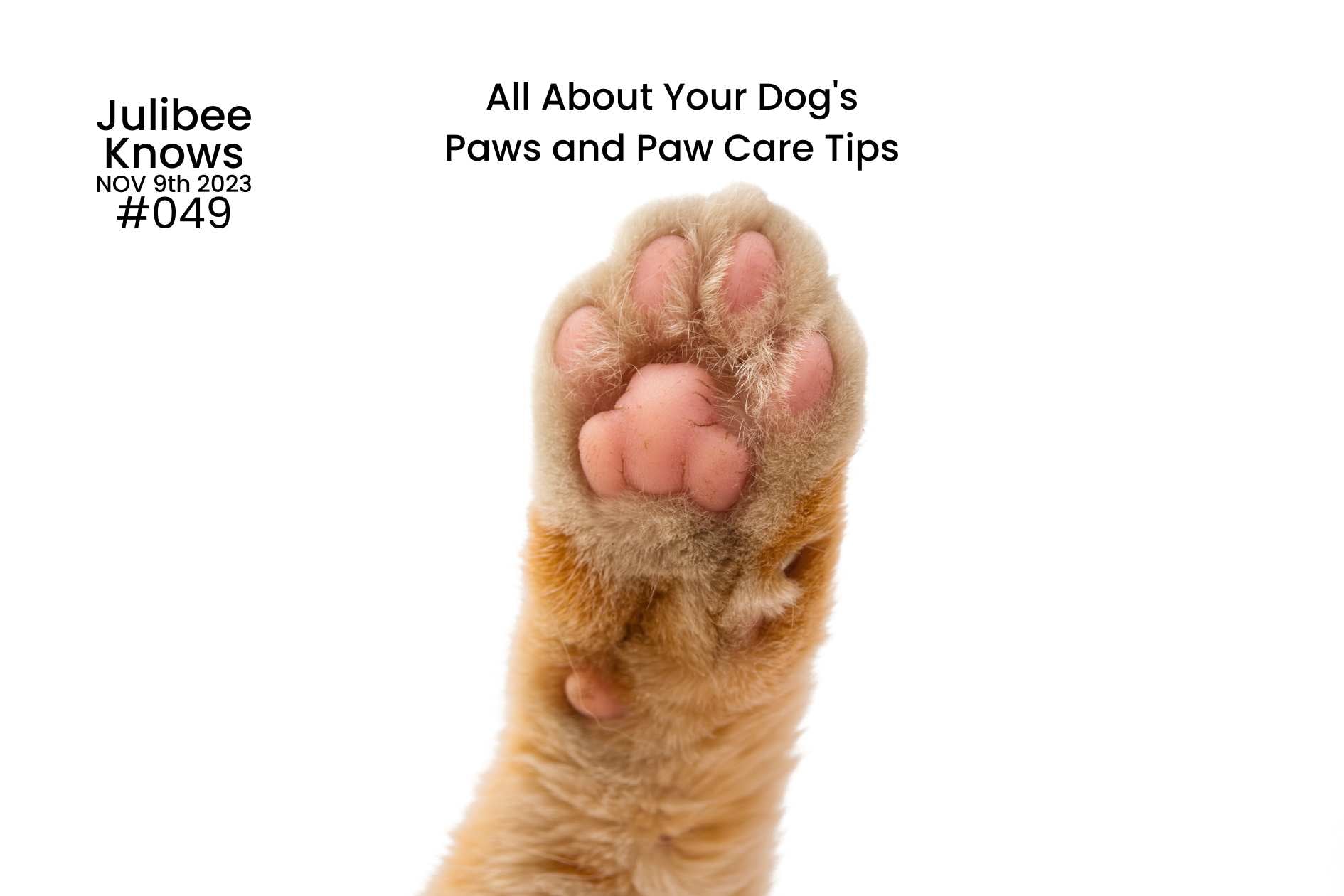
All About Your Dog's Paws and Paw Care Tips
Explore the fascinating world of your dog's paws and learn essential paw care tips. Discover different paw shapes and the unique functions of wrist pads on your canine companion's front legs.
Inside this Article:
In this comprehensive guide, we delve into the intricacies of your beloved dog's paws and provide valuable insights into paw care techniques.
1. Paw Shapes:
Are all dog paws the same? Surprisingly, no! Dog paw shapes can be categorized into three main types: cat-like, hare-like, and a hybrid in between.
-
Cat-Like Paws: These paws have short toes that arch like a cat's, with all four toes close together. This design makes lifting the paw effortless, resulting in more energy-efficient running. However, it can lead to less stability when making sudden turns or leaps. Breeds like the Gordon Setter and Brittany Spaniel are known for this paw type.
-
Hare-Like Paws: Hare-like paws have a noticeable length difference between the middle two toes and the outer toes, creating a triangular print. Although not as energy-efficient as cat-like paws, these paws offer better traction and grip. This design excels in quick pivots, sprints, and leaps. Breeds such as the Greyhound and Whippet boast these paws.
-
Hybrid Paws: Hybrid paws share the tight configuration of cat-like paws but feature slightly longer toes, creating an oval-shaped print. Dogs with hybrid paws can maintain good speed during long-distance running but may have less stability in sharp turns. Breeds like the Beagle and Foxhound often exhibit this paw type.
Sometimes, a dog's front and rear paws differ in shape, with some having larger front paws and others having larger hind paws. This variation is influenced by genetics, environment, and breed characteristics. Observant pet parents might spot their furry friend's innate talents through their paw shapes.

2. Why Do Some Dogs Have White Paws?
Does it symbolize bad luck when a dog walks on white snow with white paws? Not at all! Many dogs have white paws, and this characteristic actually serves a social purpose.
White paws, distinct from the body's color, are more easily observed by other dogs. In addition to the four paws, the tips of the tail and the front chest also often have colors that differ from the body. On the other hand, there's a saying, "White Feet Do Not Treat," suggesting that dogs with white paws may require extra caution in treatment. From a genetic perspective, dogs with white paws, especially Collies, may have issues with the MDR1 gene, which can lead to reduced tolerance for certain medications. That's why many medication labels specifically caution against their use with Collies.
3. What's the Use of a Dog's Webbed Feet?
When you closely observe dogs, you might notice the webbed connections between their toes. However, some dogs have more pronounced webbing, while others have less noticeable webbed feet.
In fact, most dogs have webbed feet, although it's more prominent in some breeds than others. For working breeds around water, like Newfoundlands and Labrador Retrievers, webbed feet provide increased buoyancy and propulsion when swimming. This adaptation allows them to swim faster and more powerfully than alternative techniques. It also helps dogs navigate muddy terrain with greater stability.
Now, you might wonder why breeds like Alaskan Malamutes and Huskies have less conspicuous webbing, given they aren't typically water-working dogs. These breeds originate from cold climates, and their larger paw size and subtle webbing increase their contact with snowy surfaces, reducing the pressure on the snow. This adaptation allows them to run more steadily in the snow and achieve higher speeds.
4. Front Leg Wrist Pads:
Careful pet owners who clean their dogs' paws have likely noticed the small wrist pads on their front legs. Despite their significant distance from the paw pads, these wrist pads play a unique role in a dog's daily activities.
During high-speed running or landing from a height, these wrist pads make contact with the ground, providing cushioning and shock absorption—much like a sports shoe's cushioned sole. This feature protects your dog's body from the impact of their movements. Consequently, the wrist pads often become dirty, rough, or even cracked and scratched, emphasizing the importance of regular cleaning and care.

By understanding the intricacies of your dog's paw shapes and the significance of wrist pads, you can provide better care for these vital appendages, ensuring your canine companion's comfort and well-being."

